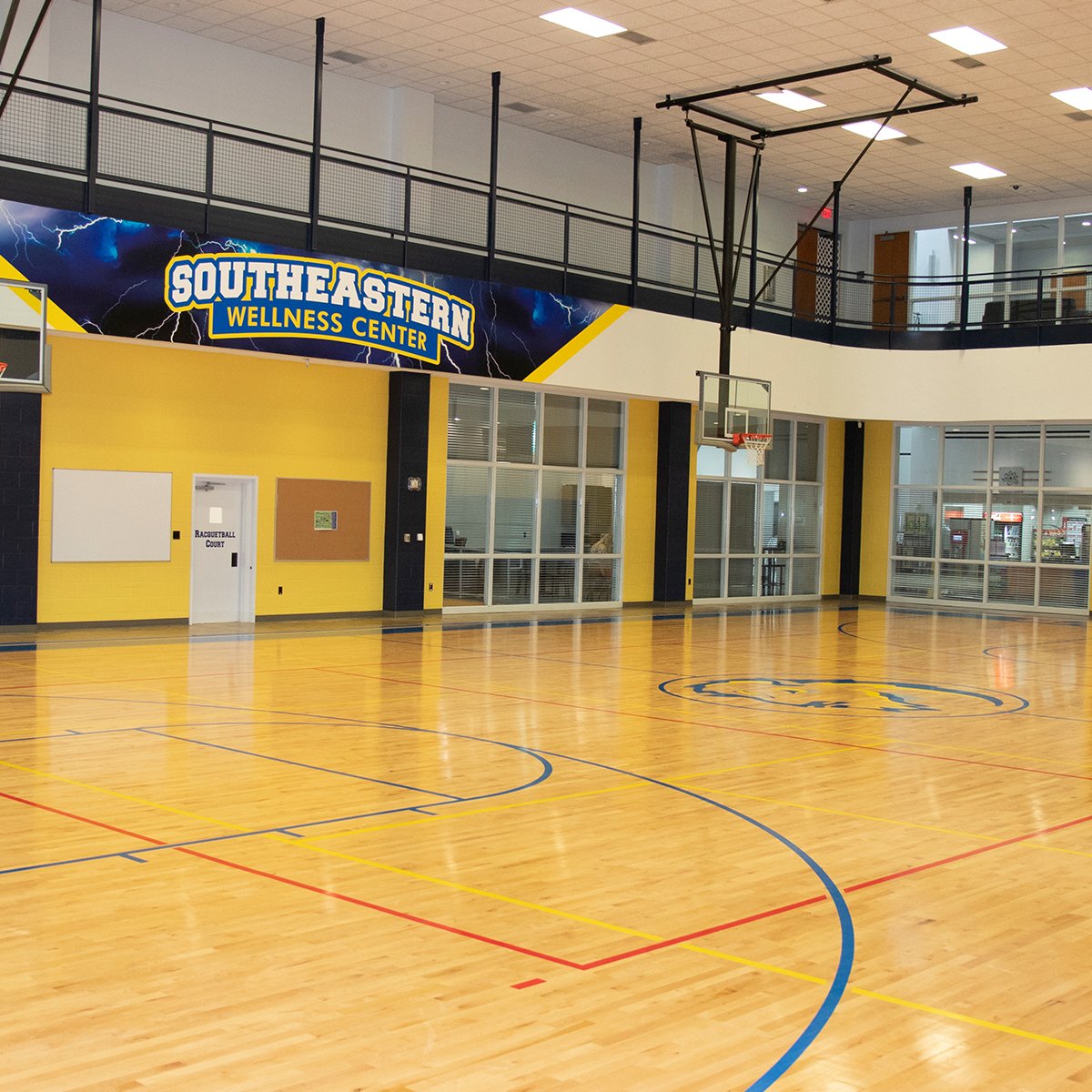
- Home
- Student Wellness Services
- Wellness Center
If you are a currently enrolled student, faculty, or staff member bring your currently validated SE ID and come join us. We are located on the first floor of the Glen D. Johnson Student Union building, north end. You can contact us by calling (580) 745-3032.
Hours of Operation
Fall and Spring Semesters
Monday-Thursday 7am-10pm
Friday 7am-9pm
Saturday 10am-4pm
Sunday 2pm-9pm
Summer Semester
Monday-Thursday 11am-6pm/Friday 8am-12pm
Semester Interims
Monday-Thursday 11am-2pm/4pm-6pm
Facilities and Services
Before you get started in the fitness areas we want you to take a look at this physical activity readiness questionnaire. If you answer “yes” to any of these questions, call your personal physician or healthcare provider before increasing your physical activity. We not only want your experience to be fun and rewarding, but also a safe one.
If you experience conditions such as dizziness, light-headedness, disorientation, exhaustion, or other signs or symptoms that put you at risk, stop activity and contact a member of the staff.
Need an excuse? We’ll give you a few. Benefits of Exercise:
Warm-up (5-10 min) Can be anything from a brisk walk to just performing the exercise activity at a slower pace than what you plan during your workout. This is the period that gradually increases the speed to prep the body for the next phase of your workout. This activity will reduce the risk of injury and maximizes performance.
Conditioning (20-60 min) This is when you should be working hard to achieve maximum benefit while avoiding overexertion and fatigue. When exercising, breathing should be rhythmical and comfortable. If you become “winded” and need to gasp for breath between words when talking, then your exercise intensity is too high and should be reduced.
Cool Down (5-10 min) Slow down the pace of your work-out until breathing returns to a pace that is not labored. If you don’t do this you may experience dizziness due to blood pooling in the lower extremities and a lack of blood flow to the brain.
Flexibility (5-10 min) You should perform at least one stretch for each major body part. Hold each stretch for at least 10 seconds without bouncing.
Check with your doctor if you are older than 40 and inactive; talk with your doctor before starting a weight training program.
Breathe- Your blood pressure can increase to dangerous levels when holding your breath. Exhaling during the lift and breathing freely can prevent this.
Seek balance- Work all your major muscles (abdominals, legs, chest, back, shoulders and arms). Strengthen the opposing muscles in a balanced way (front of the shoulder/back of the shoulder)
Lift an appropriate amount of weight- The amount of weight you lift should make your muscles feel tired after 10-15 repetitions. A weight that causes fatigue at 12 repetitions is an effective stimulus for muscle strength and toning.
Don’t do too many sets of exercise- Completing one set of exercises to the point of fatigue is all you need to obtain benefits. Additional sets aren’t necessary and could contribute to injury.
Don’t rush- Don’t jerk the weight up. Lift and lower the weight in a slow, controlled fashion.
Rest- Give your body a day to recover between workouts of the same muscle group.
Be consistent- Three workouts a week will build muscles and just two will maintain the strength you’ve gained.